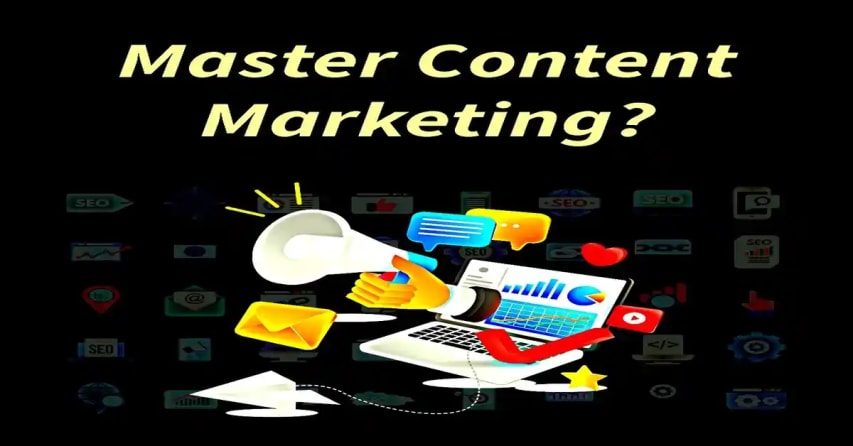Content Marketing for Bloggers: A Step-by-Step Guide

For many, the act of creating exceptional content feels like the entire job—the pinnacle of the blogging process. You spend hours researching, writing, and perfecting a post, hit 'publish,' and then wait for the traffic to magically arrive. However, in today’s hyper-saturated digital landscape, this passive approach is the quickest route to obscurity. To not just survive, but truly thrive and build a scalable business, bloggers must recognize that content creation is merely the first step.
The true key to unlocking sustainable growth, increasing your authority, and turning readers into a loyal community lies in embracing a strategic, multi-channel content marketing approach. This means actively promoting, distributing, and leveraging every piece of content you create. Content marketing for bloggers is the deliberate engine that pushes your hard work out of your niche and in front of the right audience, driving tangible results like more subscribers, higher search rankings, and increased revenue.
This comprehensive guide is designed to move you past the basics of publishing and into the realm of professional content promotion. We will outline ten actionable steps that form a cohesive content marketing strategy, helping you master everything from audience research and SEO optimization to leveraging email lists and collaborating with industry influencers. Get ready to transform your blog from a static library of posts into a dynamic, highly visible, and continuously growing online presence.
1. Set Clear Goals: A Content Marketing Strategy for Bloggers
Before diving into content creation, define what success looks like for you. Do you want to drive traffic, increase email subscribers, or boost sales? Clear goals will guide your strategy and help you measure progress. Use SMART goals (Specific, Measurable, Achievable, Relevant, and Time-bound) to ensure your objectives are actionable.
2. Understand Your Audience: The Key to Content Marketing for Bloggers
Knowing your audience is the foundation of effective content marketing. Conduct research to identify their interests, pain points, and preferred content formats. Create detailed audience personas to guide your content creation and ensure your messaging resonates with your readers.
3. Develop a Content Plan That Drives Results
A solid content plan is essential for consistency and impact. For bloggers engaging in content marketing, mapping out a detailed calendar that includes topics, formats (e.g., blogs, videos, infographics), and publishing schedules ensures your strategy stays on track. Prioritize evergreen content that stays relevant over time and aligns with your goals.
4. Craft High-Quality, SEO-Optimized Content
Quality content is king, but it must also be discoverable. Conduct keyword research to identify terms your audience is searching for and incorporate them naturally into your posts. Optimize meta descriptions, headings, and images to improve search engine rankings. High-quality, valuable content combined with SEO can significantly boost your blog’s visibility.
5. Leverage Social Media for Content Promotion
Social media is a powerful tool for amplifying your blog’s reach. Share your content on platforms where your audience is most active. Use engaging visuals, hashtags, and call-to-actions to encourage sharing and engagement. Regularly update your social media profiles to maintain a consistent presence and build a loyal following.
6. Build an Email List and Use It Effectively
An email list is one of the most valuable assets for any blogger. Encourage readers to subscribe by offering a freebie, such as an ebook or checklist. Use email marketing to share new posts, exclusive content, and personalized recommendations. Segment your list based on interests to send targeted emails that resonate with your audience.
7. Collaborate with Other Bloggers and Influencers
Networking can significantly expand your reach. Partner with bloggers or influencers in your niche to co-create content, host webinars, or cross-promote each other’s work. Guest blogging on reputable sites can also introduce your blog to new audiences and establish your authority in your field.
8. Engage with Your Readers to Build Community
Building a loyal audience requires interaction. Respond promptly to comments, ask for feedback, and encourage discussions around your content. Hosting webinars, live sessions, or Q&A events can further strengthen the connection with your audience, turning readers into advocates for your blog.
9. Monitor and Analyze Your Performance
Track your blog’s performance using analytics tools like Google Analytics. Monitor metrics such as page views, bounce rates, and engagement levels to understand what’s working and what isn’t. Use this data to refine your content marketing strategy, focusing on areas with the highest potential for improvement.
10. Repurpose and Update Existing Content
Maximize the value of your existing content by repurposing it into different formats. Turn blog posts into infographics, videos, or podcasts to reach a broader audience. Regularly update older posts with fresh information to keep them relevant and maintain their search engine rankings.
Final Thoughts
Content marketing for bloggers is a continuous process of creation, promotion, and refinement. By following these ten steps, you can master the art of blogging, expand your reach, and build a sustainable online presence.
Comments